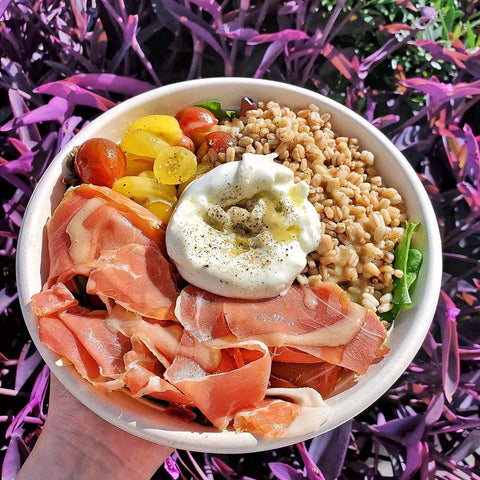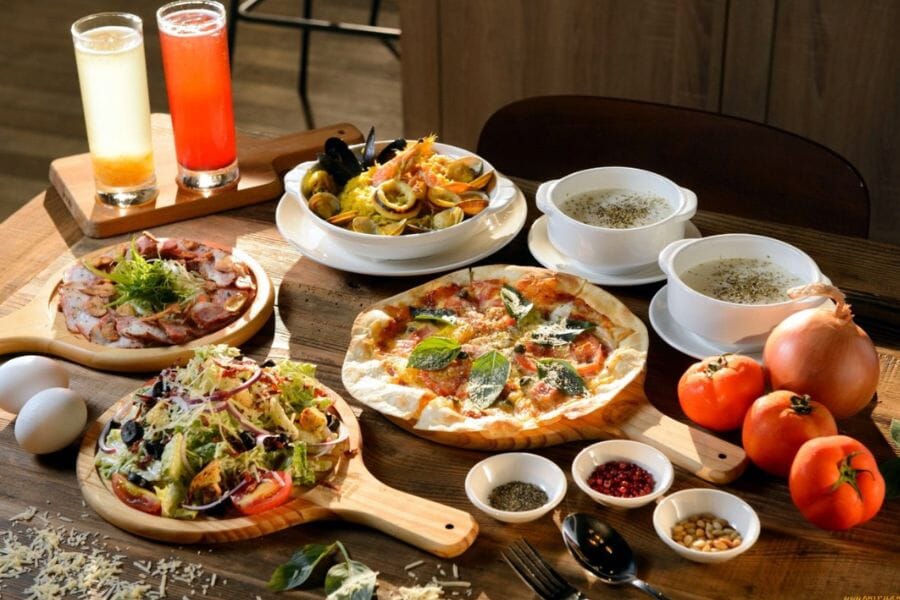When it comes to indulgence, few culinary experiences match the charm of a well-crafted cheese plate. Whether you’re hosting a dinner party, enjoying a romantic evening, or just treating yourself, a carefully curated selection of Italian cheeses can elevate your gastronomic journey to new heights.
In this article, we embark on a delightful exploration of Italian cheese recipes, uncovering the flavors, pairings, and artistry that make them an enduring symbol of culinary sophistication.
The Art of the Cheese Plate: Italian Cheese Recipes
An Italian cheese plate is a canvas of flavors, a masterpiece of textures, and a testament to centuries of craftsmanship. It’s not just about throwing some cheese and crackers together; it’s an art form, and every artist needs the finest materials.
Italian cheese, renowned worldwide for its quality, offers a rich palette of options. Let’s delve into some of the star players on this delectable stage:
Parmigiano-Reggiano: The King of Cheeses
Parmigiano-Reggiano, often called the “king of cheeses,” hails from the Emilia-Romagna region of Italy. Its pale golden hue, nutty taste, and granular texture are unmistakable. Aged for at least 12 months and often up to 36 months, this cheese is a masterpiece of patience and precision. Shave it over a salad or savor it on its own with a glass of fine wine.
Mozzarella di Bufala: The Creamy Dream
Mozzarella di Bufala, a pearl-white, lusciously creamy cheese, is made from the milk of water buffaloes. Originating in Campania, this cheese is mild, fresh, and slightly tangy. It’s the star of Caprese salads and a charming companion to ripe tomatoes and basil. Served drizzled with extra virgin olive oil and a pinch of sea salt, it’s a delightful beginning to any cheese plate.
Gorgonzola: A Tale of Two Textures
Gorgonzola, born in the Northern Italian regions of Piedmont and Lombardy, comes in two main varieties: dolce (sweet and creamy) and piccante (firm and crumbly). This blue-veined cheese adds a touch of boldness to your plate. Pair it with honey and walnuts for a sweet and savory contrast.
Pecorino Romano: Sharp and Savory
Pecorino Romano, crafted from sheep’s milk, boasts a sharp, salty flavor. Originating in the Lazio and Sardinia regions, it’s a grating cheese par excellence. Dust it over pasta or pair it with figs and olives for a taste of ancient Italy.
Exploring Italian Cheese Plate Pairings
The beauty of Italian cheese plates lies not only in the variety of cheeses but also in the art of pairing. Complementary elements, such as fruits, nuts, and condiments, enhance the experience. Here are some delightful pairings to elevate your cheese plate: 
- Figs and Honey: Fresh figs, drizzled with honey, provide a sweet contrast to the savory richness of cheeses like Pecorino Romano and Gorgonzola.
- Crusty Bread: Whether it’s a classic baguette, a rustic Italian loaf, or artisanal crackers, good bread is an essential companion to cheese. It offers a satisfying textural contrast.
- Prosciutto: Thin slices of creamy prosciutto, an Italian dry-cured ham, provide a savory, salty balance to the cheese’s creaminess. Roll a slice around a piece of mozzarella for a delightful bite.
- Wine: The right wine can elevate your cheese plate experience. Pair a light and crisp Pinot Grigio with mozzarella or a robust Chianti with aged Parmigiano-Reggiano. The right wine and cheese combination can be sheer perfection.
- Nuts: Walnuts, almonds, or hazelnuts add a satisfying crunch and a nutty undertone to each bite.
- Olives: A dish of briny olives, such as Kalamata or Castelvetrano, offers a contrasting burst of flavor that complements the cheese beautifully.
Crafting Your Italian Cheese Plate
Now that we’ve explored the elements of a classic Italian cheese plate, it’s time to bring these ingredients together into a masterpiece. Here’s how you can craft your own memorable cheese platter:
- Cheese Selection: Choose a variety of Italian cheeses, considering different textures, milk types, and flavor profiles. Three to five cheese selections are ideal.
- Pairings: Add fresh fruits, artisanal bread or crackers, and complementary accompaniments like prosciutto and olives.
- Presentation: Use a rustic wooden board, elegant slate, or charming platter to arrange your selections. Consider the aesthetics and visual appeal.
- Labeling: To guide your guests, provide labels for each cheese so they can appreciate and identify the flavors.
- Pairing Tips: Offer wine pairing suggestions, and don’t forget the wine glasses and openers.
In Conclusion
Creating Italian cheese recipes is not just about food; it’s about crafting an experience. It’s about savoring the essence of Italy’s rich culinary tradition and sharing it with loved ones. Whether you’re hosting a soirée or simply enjoying a quiet evening, a well-composed cheese plate can elevate the moment and provide unforgettable tastes and textures.
Embrace the art of the Italian cheese plate, and let the flavors of Parmigiano-Reggiano, Mozzarella di Bufala, Gorgonzola, and Pecorino Romano transport you to the heart of Italy, one delicious bite at a time. Cheers to the joy of savoring the simple luxuries in life and to the culinary enchantment that only cheese of the finest quality can deliver.

